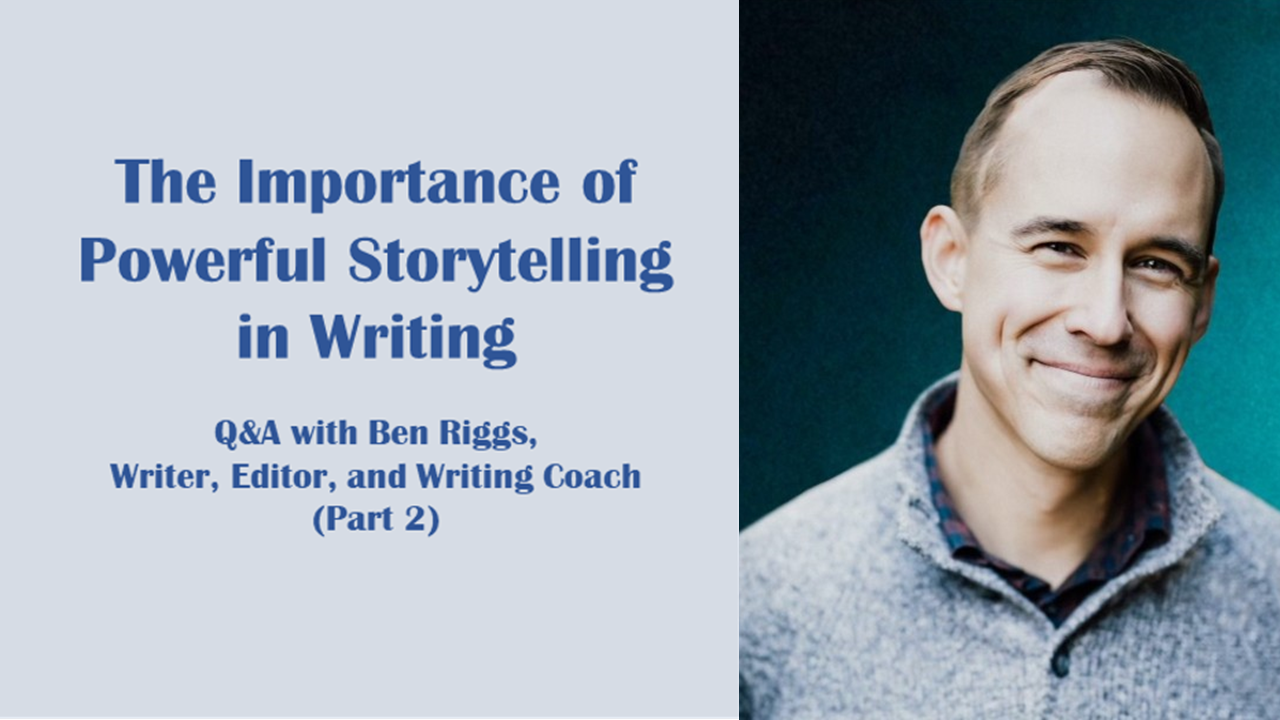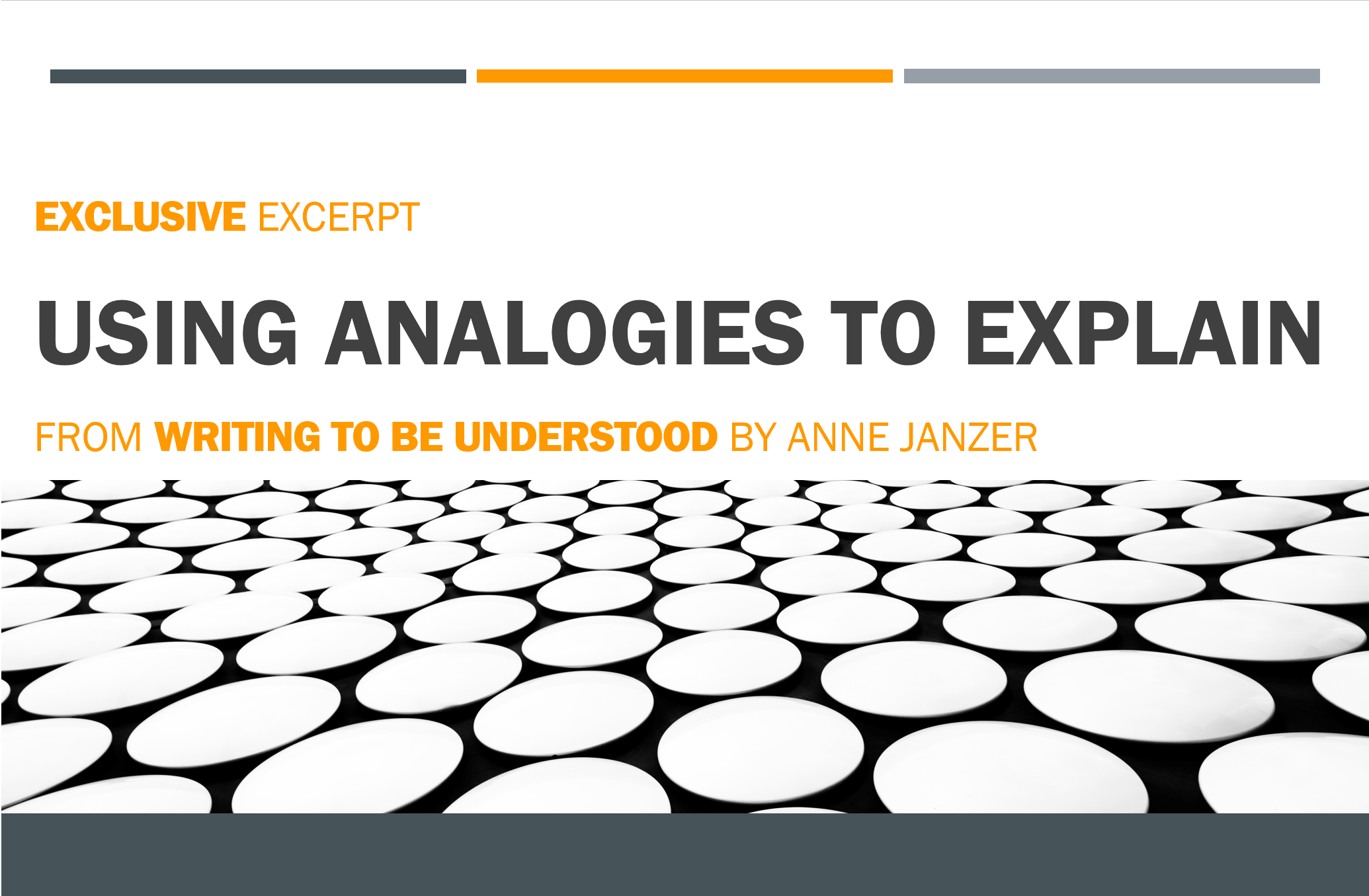We tell ourselves stories in order to live.” - Joan Didion, writer and journalist
From ancient Egyptian hieroglyphs to the 280 characters of a Tweet, the ritual of sharing stories through writing continues to be a vital component of human connection. For writers looking to connect with their readers on a deeper level, it’s imperative to learn the basics of powerful storytelling.
That’s why in Part II of this interview series, we talked to writer, editor, and writing coach Ben Riggs of Riggs Writing LLC to learn more about effective storytelling and writing techniques. In Part I, Ben shared his insight on the writing process, what it takes to “write well,” and how to get started with writing if you feel stuck.
How does storytelling relate to good writing?
Good storytellers know what it takes to connect to and keep the interest of another busy human.
Storytelling requires lots of thinking about how to bring a reader through an event or series of events while also informing that reader.
Consider short story authors. They have to think long and hard about how to create worlds, dilemmas, and resolutions through a fairly narrow focus. To do so, they’ve thought about what will be meaningful to readers, what will keep them engaged, and what will get in their way that needs to go. Short story authors are ruthless clutter cutters.
We can learn a lot from them about what makes for good writing.
Is there a specific structure or flow to compelling storytelling?
It’s an age-old question with many answers. Since the days of Aristotle, we’ve toyed with what makes for a good story, wandering into weird territories (often called Literature departments) only to come back to the same “storyteller tested, listener approved” domain of appealing to human empathy to tell tales of others navigating life’s problems.
I don’t mind the typical narrative arch of “beginning, middle, and end.” We’re pattern-seeking creatures, and this tends to be the pattern we process life through. But life rarely unfolds in such a packaged way. And the “trick” of the storyteller, particularly distilling real life for readers, is to subtly impose some sort of structure onto an unfolding event or series of events without making it seem like that’s what’s happening.
No writer can, nor should she, try to say everything about something. Great stories are the result of a writer having carefully selected what she’s going to say and not going to say.
For me, though, before I consider what structure makes for a compelling story, I consider two variables that are non-negotiable in good storytelling: momentum and meaning.
Great stories answer two questions: “What happened?” and “What does it mean?”
Good stories—like good writing—keep readers moving and keep the main point uncluttered.
In narrative writing, or verbal storytelling, readers stay involved where they feel momentum. Scenes are important, but too many static paragraphs (or pages) of description start to feel like a still life. Readers need to feel momentum, what novelist John Gardner called “profluence.” Even if there’s nothing dramatic happening (in narrative, there’s almost always something happening, whether it’s dramatic or not), readers can still feel as though there’s forward motion.
How can writers connect better with their readers?
Remember that a reader is likely to put a piece of writing down because they’re bored, not because they’re lost.
When a writer assumes a reader is always at risk of getting lost, that writer will anxiously overcompensate to keep that reader from wondering where to go between the recent period and the next capital letter. Ironically, that writer risks insulting the reader and it makes for clumsy writing. Some indicators a writer has gone this route are mile-long warm-up phrases at the beginning of sentences, painfully obvious transitions between paragraphs, and more than one parenthetical in nearly every sentence.
My advice: envision the sentence as a walking trail or path. A writer’s job is not to bludgeon readers and drag them through the sentence. A writer’s job is to clear the path of problems to let readers enjoy walking along at their own pace.
About Ben Riggs
Ben is a writer, editor, and writing coach in Dayton, Ohio. He's married to his wife, Emily, and is an unabashed dog dad to Lewie. He's the author of Tell Them a Story, a booklet on using narrative in everyday writing. And he posts regularly on his LinkedIn page.
About the Author
Nicole Abboud-Shayan is the Business Development Associate for WordRake. Prior to joining the team, Nicole practiced law for several years and then launched her own media and marketing company. Follow Nicole on Twitter @nicoleabboud or connect with her on LinkedIn.






